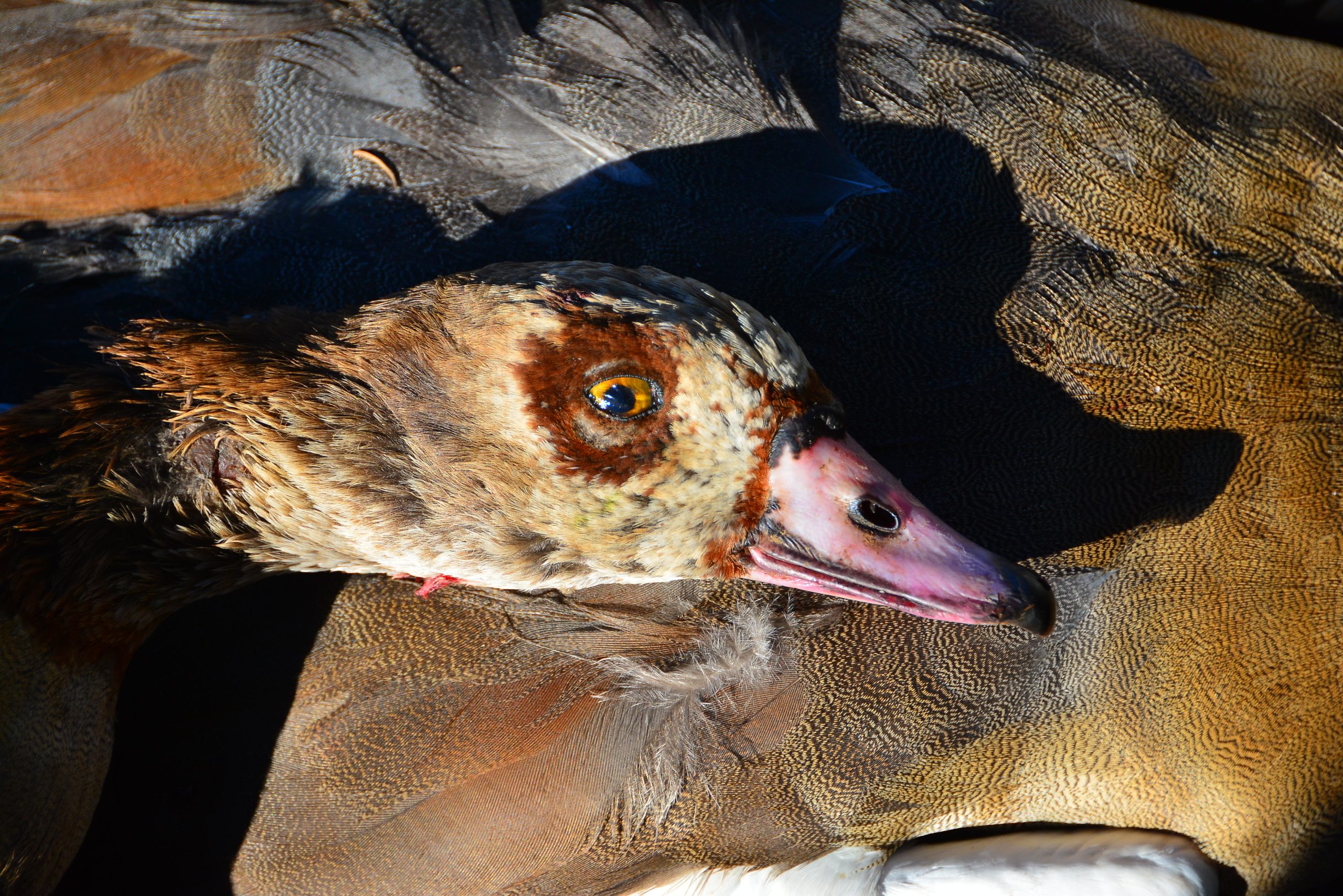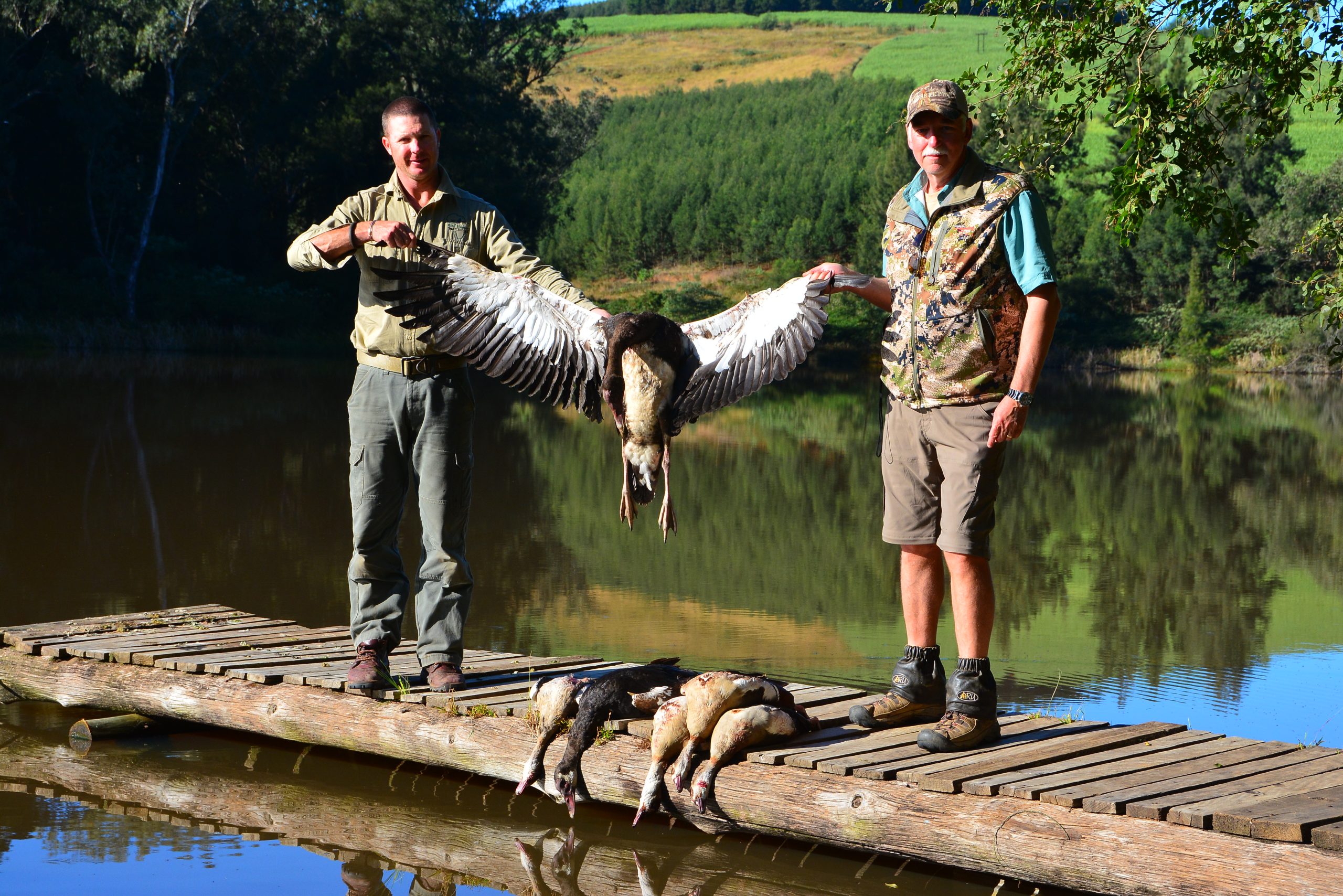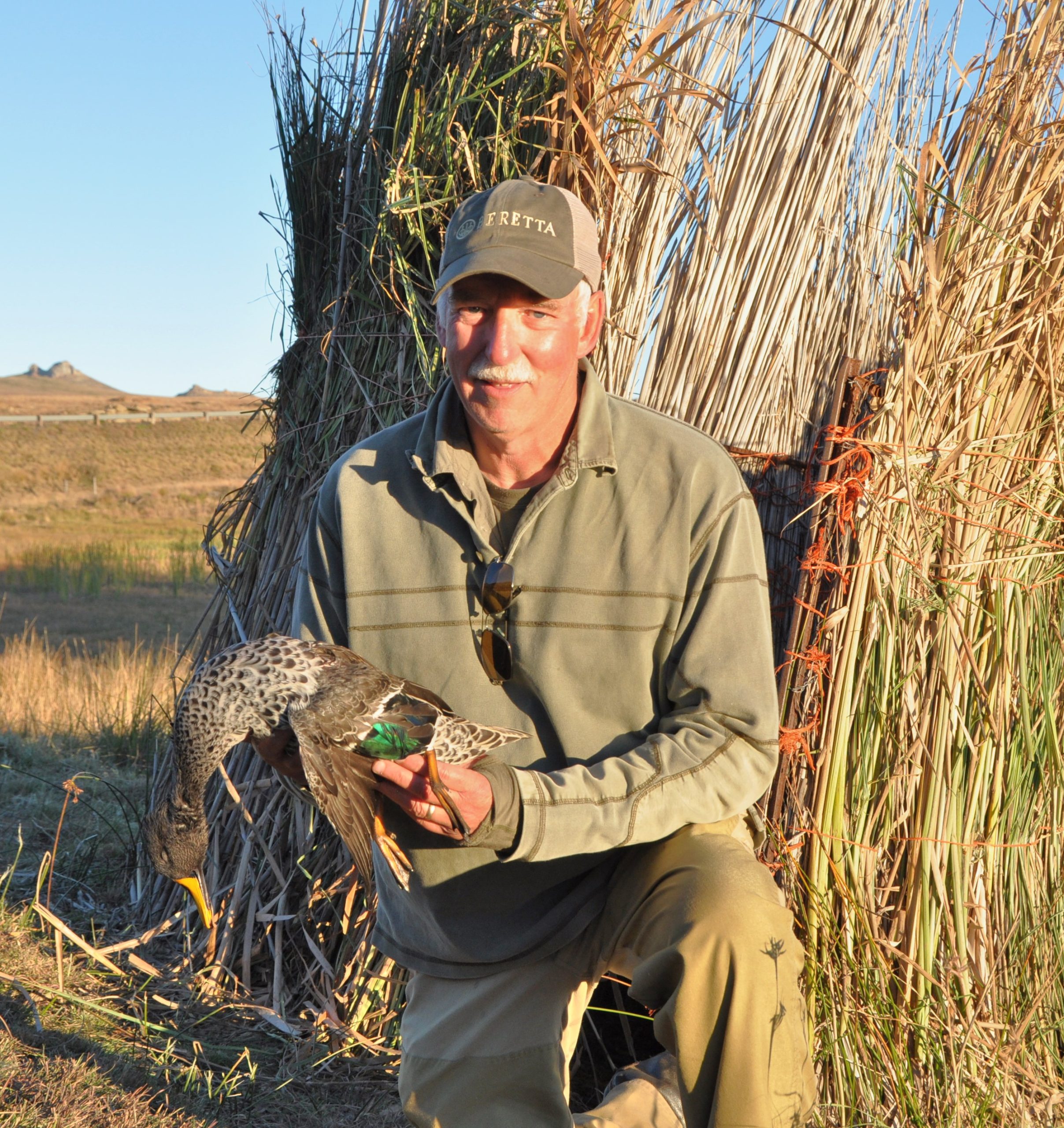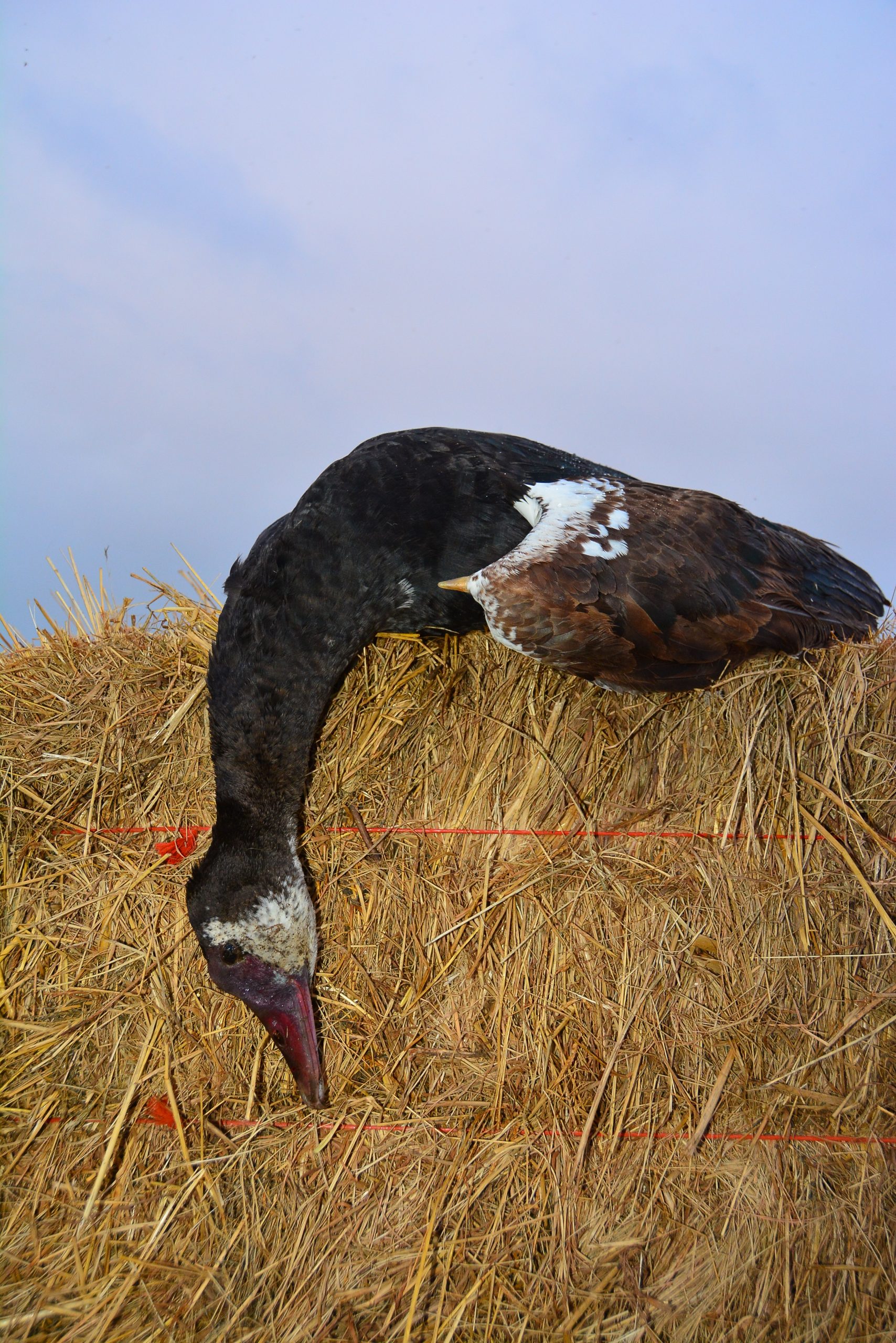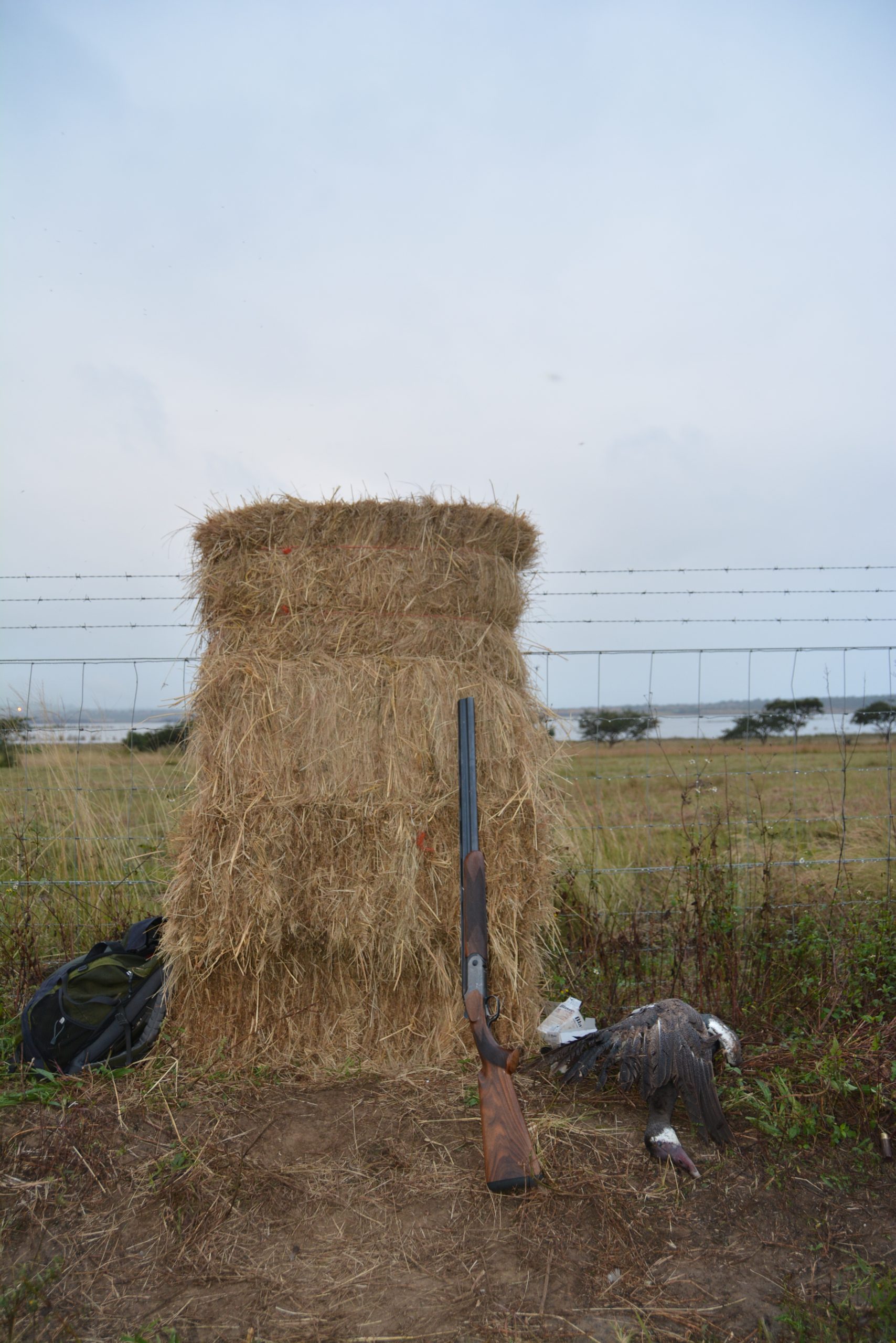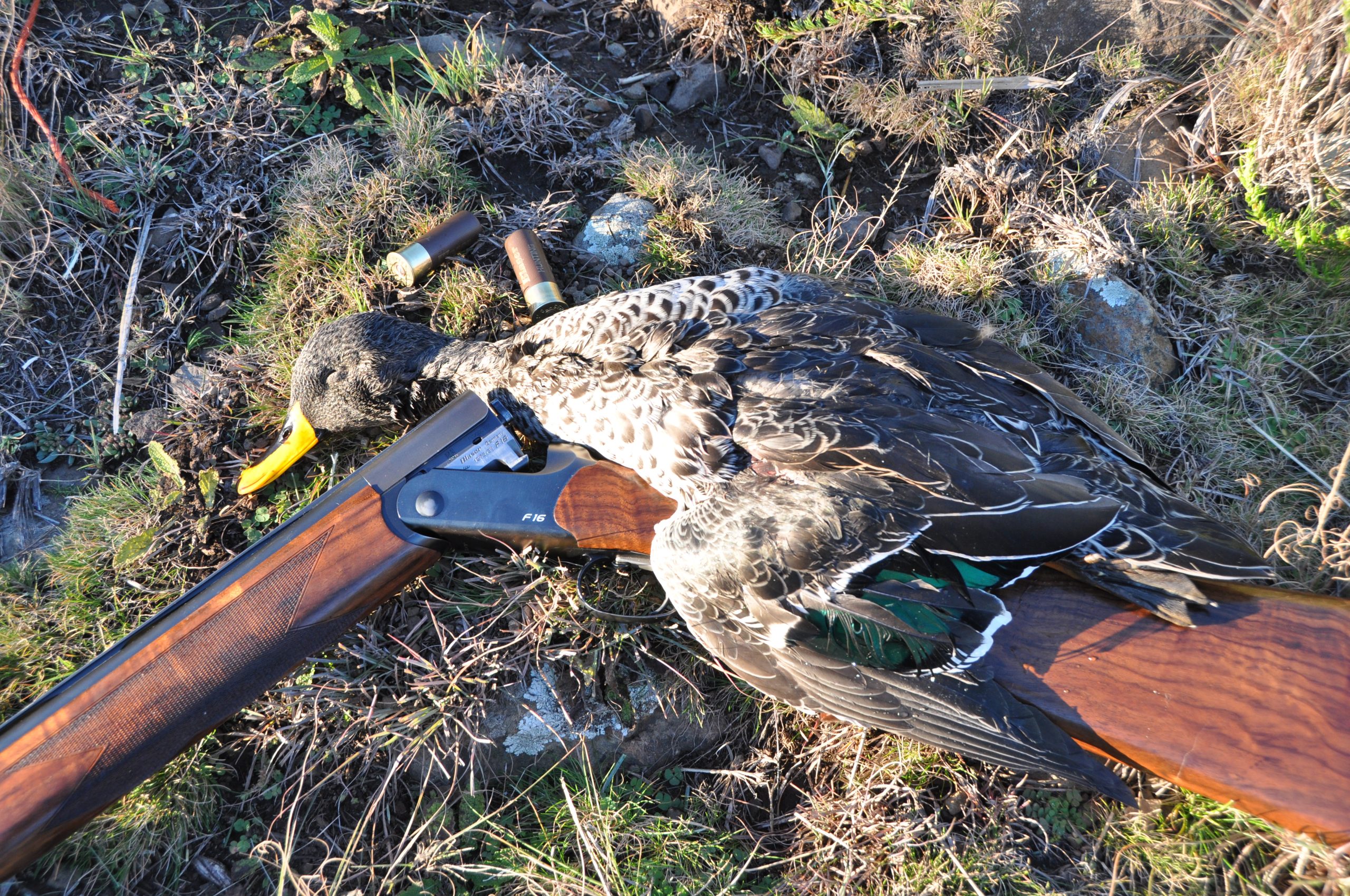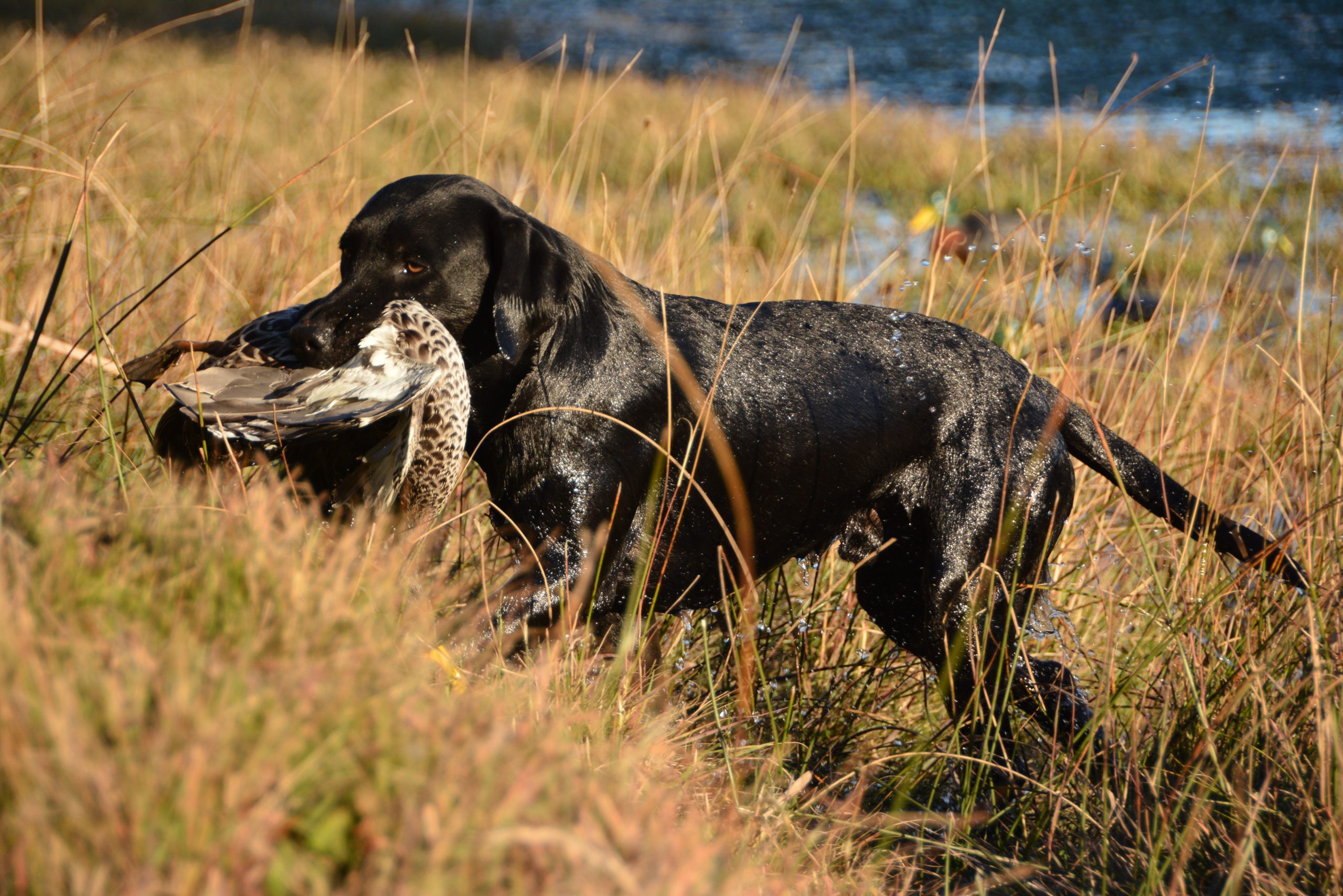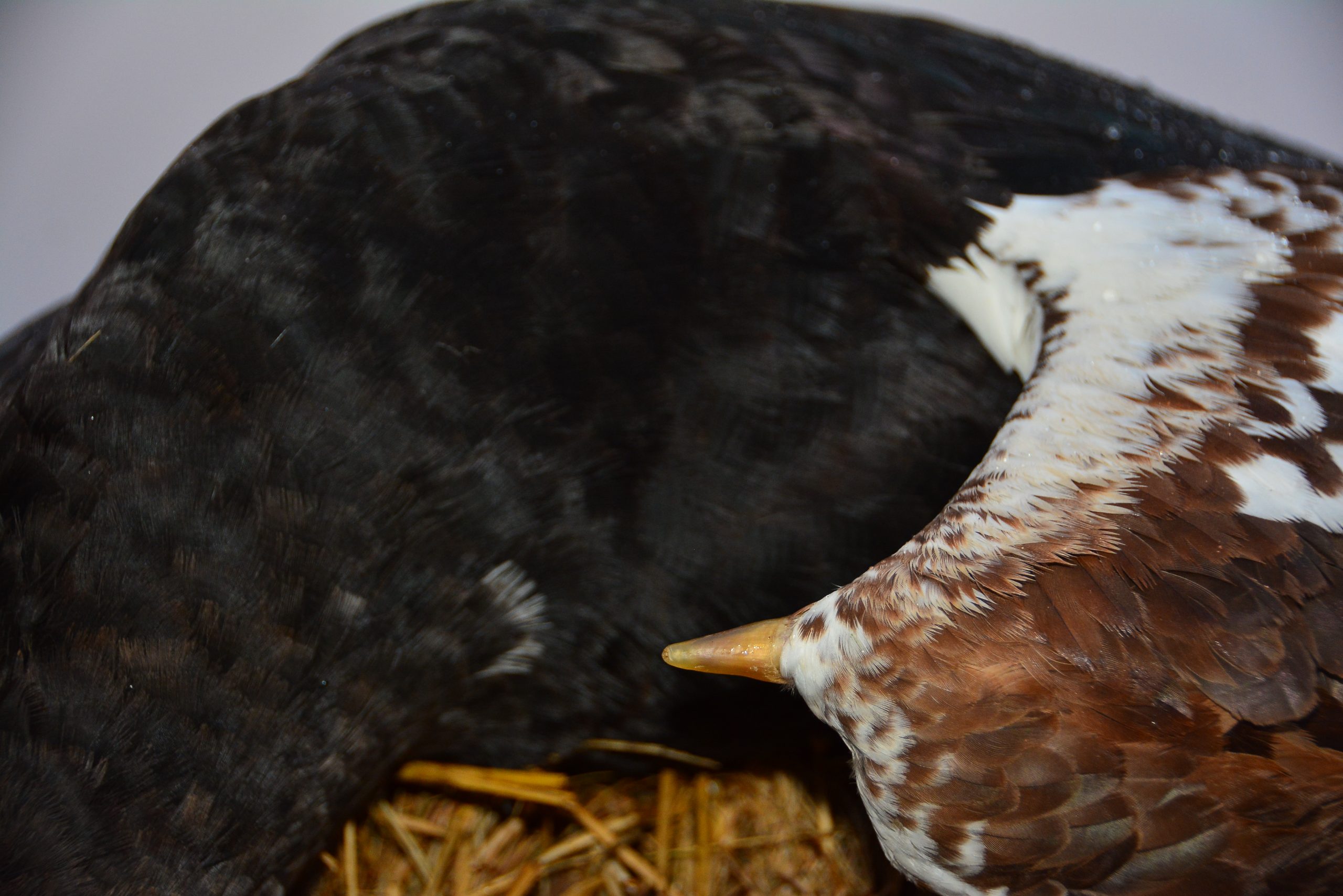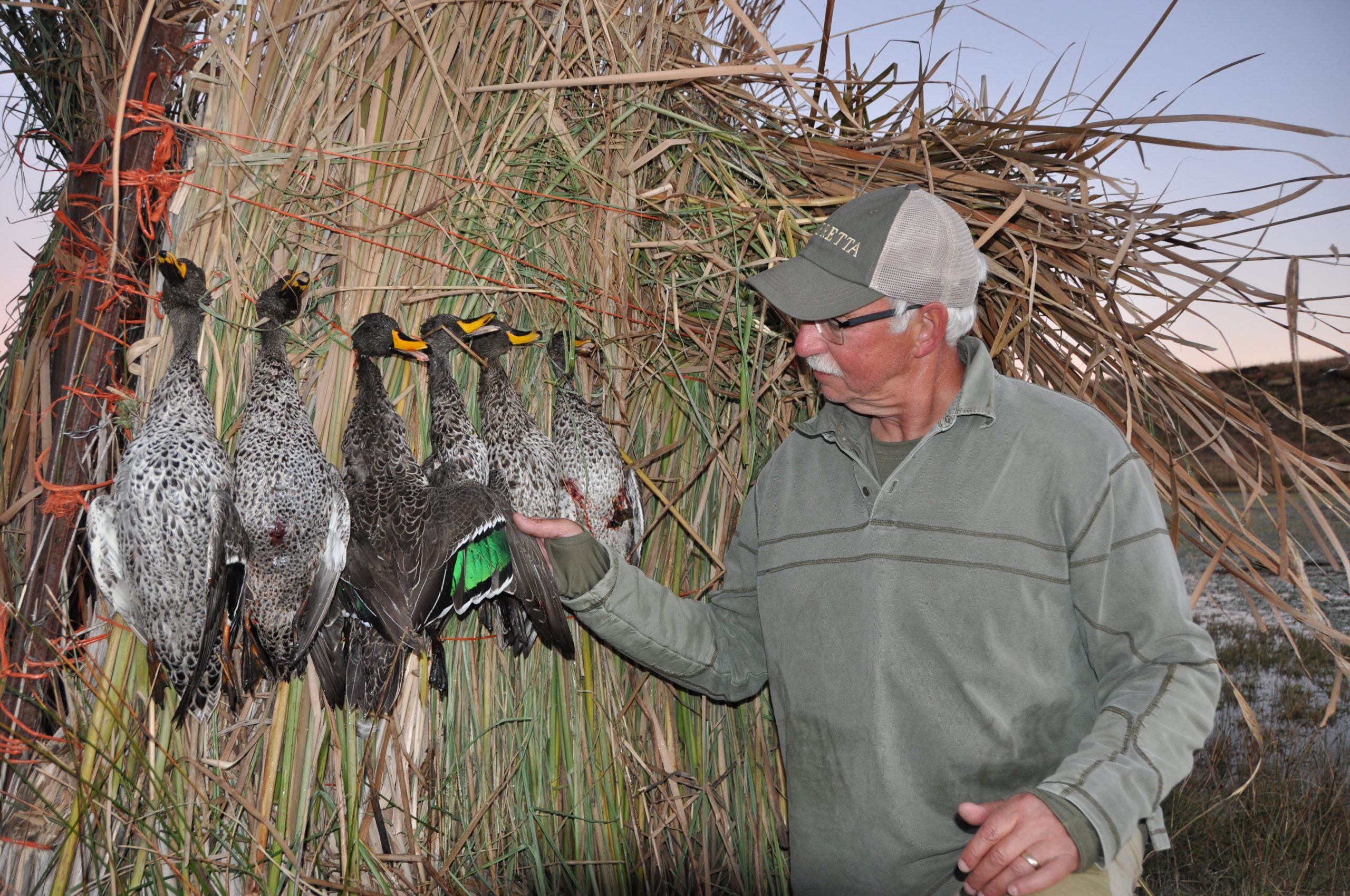Apr 29, 2019 | News
[vc_row][vc_column][vc_column_text]
Facing Down (a different) Fear… a South African Chippendale in Reno
The Naked Truth at Harrah’s 2019 as related by Joe da Silva
I have been in the hunting industry for over 30 years and I have been in many different dangerous situations in my life, and just got on with it. But in all those times, and those of many other PHs who have also experienced similar situations of fear, normally you have been taught and trained how to handle them. And always you have something in your hand, like a firearm, to protect you. But when you have nothing to hold onto and no one to turn to, then this is “FEAR”, and you know you are in the biggest trouble of your life.
After a long flight from Cape Town into Reno in January 2019 for the SCI show, I arrived at my hotel at 7.30 p,m. This was my first time staying at the Harrah’s hotel in Reno. Normally I stay at Legacy, Circus or Atlantis but I had change of mind in staying somewhere different this time.
After booking in, I dropped into the little convenience store across the way to buy my supplies for my room – orange juice, bananas, and my bottle of Crown Royal. I do it every year, and I also go in search for the nearest Starbucks for my morning start before the show begins. After settling into my room, going through my emails, I poured myself a glass of Royal with ice, spent an hour working on emails, showered and got into bed. I didn’t switch on the TV as I don’t enjoy watching it in the US – 98% adverts and 2% movie. I prefer to read. The last thing I saw just before falling asleep at 9.15 was the bright red electronic clock
About 12.30 a.m. I woke up to do my usual early morning whiz in the toilet. Getting up, I felt like I had almost in lost my mind (not from alcohol, just lack of sleep).
As I opened the door, it did not register that I never open the toilet door as it is always open in my room – my brain was in slo-mo – and what I was opening was the front door of my room. I walked down a little way away from the door and heard it close behind me. That’s when my brain started to light up. I immediately went for the door handle and heard “click”, and I was locked outside my room. My mind was in wake mode now and the realization hit me like a lightning bolt. This person was totally naked as I don’t sleep with any clothing.
I will always remember many years ago a friend of mine Ron Crous shot a charging lion in Botswana with Johan Caltiz. One of Johan’s clients had wounded the lion and Ron shot it from a kneeling position, shooting it in mid-air between the eyes with his .458 Win. Mag. open sight rifle. He gave me the video, and when I saw him at Reno some years later, he said, “You will know you got balls as a PH when you face a charging lion… Ron, I am afraid you are wrong. I’d rather be facing the lion charge than standing naked at 12.55 a.m. on the 11th floor of my hotel.
What went through my mind at that moment as millions of neurons were sparking all over my brain? While standing naked in front of the door of my room I soon realize that I need to figure out help, hoping nobody would come or leave rooms near where I was standing. I spotted a fire escape sign about five doors down to the left side of my room and immediately ran towards it and opened the door into the fire escape. Just remember I still needed to go the toilet for a whiz – the urge to go and still to concentrate was not easy at all.
I walked down from the 11th floor to find something that I could possibly use to open my room door. On the 9th floor I saw a bunch of hard carbon cards on a wire ring which the Fire Inspection Officer adds on when he finalizes his checking that the fire hoses are in order. It was a bunch of cards from years back, and I struggled to remove the wire loose so that I could take a card off the wire. Eventually I did get it loose and took two cards to my door. (Many years ago I was fascinated by a person called MacGyver and I used to watch his weekly programs which were great for mindless thoughts and quite entertaining at the time, and I guess the Swiss army knife factory could not keep up with the demand – good marketing.) Unfortunately I did not find any Swiss army knife like MacGyver had, but I took his idea to use the card like a credit card to try to slide open the latch of my door, like MacGyver did in his movies. What I did not realize, I was outdating myself by 35 years – MacGyver could do it in those days, but now all doors on hotel rooms have a metal safety device to stop anybody from entering by using a credit card, so plan “A” did not work.
I ran back down the fire escape to put the cards back so that the next inspection of the fire chief would not be lost and he would not be worried about his cards missing. My urge of wanting to relieve myself increased, so a thought came into my mind – should I just whiz down the fire escape stairways? But I could not let myself to do such a terrible thing. As I slowly walked further down the staircase to the 8th floor I saw two empty Corona bottles on the stairway. I immediately grabbed one bottle and starting urinating into it, but one did not do the trick and I filled the other one…What a relief. One less thing less to worry about now. I left the two bottles in a corner well-hidden, hoping no one would see them and think he got himself two full Corona beers.
Walking my way down slowly I came to the 5th floor and I heard someone talking. It sounded very foreign but I could not clearly understand what language it was as it echoed up the stairway. As I went further down I saw a very young man sitting on the steel staircase and talking into his cell phone and enjoying a beer. He did not notice me at all.
I finally decided I needed to approach him. As I got nearer to him he glanced up and saw me one floor above him. He looked at me strangely and put his hand up, telling to me to stop. I froze, but he just continued talking on his phone and drinking his beer as if I did not exist. Maybe he was talking to his girlfriend, far more important than some crazy old man walking naked to him. I guess I was not part of the Chippendale group. I stood there waiting for his attention but he just ignored me and continued to speak on the phone.
I realized he was Spanish as I could hear a few words. I decided I needed to get some reaction from him and I walked down closer and he finally stood up, telling me to stop in Spanish. I asked if he could speak English and he said no. Then I had to work quickly on my Spanish as I do speak Portuguese. I tried to explain that I needed help from security – this took some doing as you can well imagine. With much persuasion I finally got him to go look for a security person of the hotel. After about 15 minutes I was standing there still waiting for him to come back to me, which felt like a lifetime. I was hoping he was going to return.
Finally he arrived back and said he had spoken to the security. How he got the message to security as he could not speak a word of English was another thought that went into my brain, and whether this security guy understood him and if he would come. After almost 20 minutes waiting I started to converse with him. He said he was from Salvador so I named him Mr Salvador, hoping he was going to be my savior. He said he had just finished working as a dishwasher at the kitchen of a restaurant in the hotel.
After some time I asked him to go and look for the security guy again. He hesitated, but I said I would pay him for his help. I don’t know what went through this guy’s mind when he and I were talking – he probably thought I was crazy. He asked if I was on drugs or drinking, and lastly enquired whether a woman had kicked me out of my room. I suppose these things happen in Reno hotels.
Finally a 6.5-foot tall security person came and I explained and said there was not anything sinister, that he could check at reception on my room number and my name to confirm. He was very understanding and said he’d help. “Just follow me,” he said. What a relief. I asked if “Mr Salvador” could come with us, as I’d like to give him a donation for helping me. “No problem,” said security, so Mr Salvador took an old black T-shirt out of his bag and gave it to me to wrap around my body. Unfortunately, it was so small it just covered my private parts.
From the 3rd floor we followed my security guard up the fire stairway. As we got to the 5th floor, he said we could now use the service lift to take us to the 11th floor, and pressed for it to arrive. It would not open. He then contacted his other friend via his two-way radio. “What’s wrong with the service lift not opening on the 5th floor?”
“It’s damaged,” was the reply. Wonderful. “We have a challenge now,” said security. “What challenge?” I asked. “For us to get into the 6th to catch another service,” he explained, “you have to get out the fire stairway and get into the passage of the hotel rooms and run to the other fire escape stairway and then catch the another service lift to the 11th floor.”
”Are you joking? Is there no other way?” He wasn’t. “OK, I have no option.” “But you have to cross the whole passage to get into the other side,” he added. Holy Moses I can’t believe this is happening to me. “Ok,” I said to him, “but you must walk to the end of the passage to see if anybody is going to come out of their rooms, and me and Mr Salvador will run together and meet you at the end of passage.” So we popped our heads out of the fire escape door and he gave us a signal to run to him.
Well, Usain Bolt would have never caught up to me. We managed to get into the service lift up to the 11th floor. Once we arrived there was another obstacle to conquer, another passage to run through to get to my room. I did another Usain Bolt run to my door – what a relief it was. The security guy took his master key to open the room… Guess what? It did not work and there I was standing, still naked, in front of my door, back to square one… Security had to radio his other friend to come and open the door as he had the wrong key. While waiting there he went out to the other side of the passage and managed to collect a used towel from the service room. Not naked anymore. Finally his friend came and opened the door. Before we entered the room he asked me to describe anything in the room to prove it was mine. I told him on my bedside table you will find a notepad written with word “Suitcase”, and my mobile phone is 7s IPhone with a black cover. He checked and said good to go. They got a nice tip from me to thank them for all their wonderful help.
The red light clock said 3.45 a.m. as I got into bed again. As I was lying down I wondered if it all really happened or was this just a dream. I phoned my wife as I could not sleep at all as the whole saga was running through my mind all over again and I needed just to talk to someone. She was quite surprised that I was phoning her at that time. “Shouldn’t you be sleeping?” “Yes,” I said, “but I just wanted to let you know there is a new member of Chippendale in Reno, and he is here in Harrah’s Hotel in room 1146.”
And every night for the duration of the show, I assure you that I put a chair in front of the front door to make sure I did not go through that door to the bathroom.
Joe was born and based in Cape Town, and is the owner of Cape Town Hunting Safaris and Tours. He has had over 36 years in the hunting industry, and has been an International Firearms instructor for over 25 years, as well as owning his own gunshop for 30 years. Joe is a qualified and registered tour guide and auctioneer, and conducts hunts into Zambia, Zimbabwe, Mozambique, Namibia and South Africa. He is also a qualified knife maker in his spare time. [/vc_column_text][vc_btn title=”View article in E-ZINE” color=”chino” align=”center” link=”url:https%3A%2F%2Fafricanhuntinggazette.com%2Fapr-may-june-2019%2F%23africa-hunting-gazette%2F106-107||target:%20_blank|”][/vc_column][/vc_row][vc_row][vc_column][vc_masonry_media_grid grid_id=”vc_gid:1556537866113-f0c16f8d-130c-5″ include=”21405″][/vc_column][/vc_row]
Apr 29, 2019 | News
A flight of yellow-billed ducks on final approach.
By Ken Bailey
In the big-game hunting world there’s a loose conglomeration of species collectively referred to as “charismatic megafauna.” These are the animals with special appeal, typically because of their physical size, their glamorous appearance or, in some instances, because of their unpredictable disposition and a willingness to demonstrate their displeasure. This list includes all of the Big Five, of course, as well as crocodiles, giraffes and the hippopotamus. It also includes those game animals revered for their regal beauty, including the kudu and sable. For the sportsman, hunting any of the charismatic megafauna has a unique way of inducing a racing heart, shortness of breath and sweating palms; in short, an excitement that underscores the very reason we choose to hunt them. We thrive on that adrenaline rush.
Wingshooters, by and large, don’t have a list of similarly compelling species to pursue. But if there’s one bird that can stir the emotions, at least for me, it’s the spur-winged goose, the largest goose on the planet. As a self-professed hardcore waterfowler, the prospect of dropping one of these oversized geese, with the namesake unusual protuberance on each wing, is something I’d lusted for since I saw my first spurwing some 30 years ago. So when the invitation came to help out a farmer whose crops were being decimated by geese, including spurwings, my pulse immediately kicked up a notch or two.
We’d be hunting near Baynesfield in South Africa’s Kwazulu-Natal province. My partners were Mark Haldane, a larger-than-life PH renowned for his Mozambique safaris, particularly for Cape buffalo, and Dylan Holmes, a PH who guides for Mark. Both enjoy bird hunting when the opportunity presents itself, and have been hosting wingshooting safaris for many years. While Dylan is quiet and measured, Mark is all personality and an eager and captivating story-teller.
Above: Egyptian geese were more plentiful on our hunt than were the larger spurwings.
Right: PH Dylan Holmes and the author with a spur-winged goose. The wingspan is enormous.
We arrived at the farm after a seven-hour drive from the Eastern Cape where we’d enjoyed two days of hunting grey-winged spurfowl. Though the drive was tiresome, the anticipation of hunting spurwings had me alert and focused as we pulled in. After meeting the landowner, we surveyed the situation. His oat crop was just sprouting and being ravaged at its most sensitive stage by marauding geese staging on a large wetland less than a mile away. The waterfowl season wouldn’t officially open here for a couple weeks, but he’d received a damage control permit as a way of protecting his crop. If he waited until the opener to do something about the depredation, these geese would have his entire oat crop grazed to the nubs.
The geese’s route was a quick, direct path in from the lake. We could watch them as they lifted off the water, circle a couple of times, then fly arrow-straight to the field. Given the relatively short flight they weren’t gaining much altitude, so pass shooting them as they approached the field was the most obvious strategy.
Mark, Dylan, the landowner and I spread out along the fenceline bordering the oat field, 100 yards or so apart, each of us hiding behind a large straw bale. It was late afternoon and the geese were already flying as we scrambled into position. They were a mix of spurwings and smaller Egyptian geese that were easily identified by their brown and grey bodies and distinctive dark eye patches. As I watched flight after flight of geese rise from the wetland, it was obvious that Egyptian geese were the more numerous of the two species here.
The first birds that flew towards the field after we were in position were a pair of noisy Egyptian geese that glided 100 yards to my left, near where our farmer host was hiding. As the birds crossed the fenceline he rose and, with two practiced shots, folded both cleanly. Very impressive shooting, I recall thinking, though it put pressure on the rest of us to shoot as well. I didn’t have long to wait before it was my turn, as an incoming bird’s flight path would put it right in line with where I crouched behind the bale. From its dark colouration and massive proportions I knew immediately it was a spur-winged goose. It crossed the fenceline to my left, about 40 yards up, hell bent on the waiting oat seedlings. Mounting and swinging my gun in one smooth motion, I pushed my barrel in front of the crossing bird and hit the switch. The goose never so much as rustled a feather. A rapid follow-up shot had the same effect, or lack thereof – I’d missed cleanly! I shrugged it off, putting it down to getting the kinks out, and prepared for my next opportunity.
A few minutes later another spurwing flew over on a near-identical trajectory. Unfortunately, my results were identical, too. From down the way I heard the farmer yell, “Get out in front of them further,” or words to that effect in a not especially friendly manner. That was understandable as he was trying to save his crops while I was hunting
The author with a yellow-billed duck. It’s perfect when they arrive in twos and threes.
recreationally; he clearly had more at stake than I did. As I was to learn later, missing is not an uncommon experience when hunting spur-winged geese for the first time. Their enormous body size and deliberate wingbeats make them appear to be much closer and flying much more slowly than they really are. As a consequence, shooting behind them is a frequent mistake for newcomers to the game. I swallowed my pride after the reprimand and vowed I wouldn’t make the same mistake again.
A short while later a flock of six Egyptians winged towards my position and, remembering the admonition, I forced myself to significantly increase my lead before pulling the trigger. Two shots and two geese crumpled to the earth! I smiled with newfound confidence and watched contentedly as Mark’s lab raced into the field to retrieve them. I had the sight picture now.
Shortly after, a lone spurwing flew towards my position. I was fully prepared this time, and dumped it cleanly with one shot. It landed about 20 yards from where I stood, and I swear I could feel the earth tremble when it thudded to the ground. I ambled out to retrieve it, eager to hold the massive bird. It was even bigger in the hand than I had imagined, probably nearing 20 pounds, substantially heavier than even the largest Canada geese I hunt at home. I stood marvelling at its heft, its jet-black plumage, and the strange and dangerous-looking protrusion on its wings, before being jolted back to reality by Mark, who hollered down the line that another flight of birds was on final approach.
The spur-winged goose is the largest goose on earth, often almost 20 pounds.
Bales along the fenceline proved to be the perfect blind for ambushing approaching geese.
The yellow-billed duck is about the same size as the mallard so common in North America.
It always help to have a Labrador retriever as a hunting companion.
Over the next hour or so we enjoyed steady action. When we finished up we had two dozen geese on the ground, about a third of them spur-winged. After my initial misses I held my own in the shooting department, and the farmer appeared to sincerely appreciate what the three of us had done to help with his goose problem. As we packed up our gear, I took a moment to reflect on the hunt: you are too caught up in the moment to always fully appreciate it when the event is unfolding. I’d fulfilled a long-standing dream to shoot the world’s largest goose, and had done so with a great group of people in a glorious setting. All in all, it had been a helluva day.
My African waterfowling wasn’t confined to that one afternoon of goose hunting, however. Before we’d left the Eastern Cape the previous evening, I’d hunted ducks with local rancher and PH Robbie Stretton and a couple friends from Alberta, T.J. Schwanky and Vanessa Harrop. After a morning hunting grey-winged spurfowl, Robbie put the three of us in a series of one-person reed blinds spaced out evenly along a dammed section of a 10-mile long watercourse. A dozen and a half floating decoys rested in the shallow water along the shoreline. As we were getting our gear squared away and settled into our respective blinds, a pair of shelducks, a handful of red-billed teal and a dozen or so yellow-billed ducks sprang from the pond. They would be harbingers of what was to come, as over the course of the next couple hours we were treated to some wonderful duck hunting.
The spur that gives the spur-winged goose its name.
The teal and the shelducks never did return, but yellow-billed ducks spiralled into our decoys on a regular basis. Most often they came in twos, threes or fours, which is perfect. If they arrived in large groups there’s a risk of flock shooting rather than picking out a single bird; more often than not that results in a clean miss. T.J. and Vanessa took turns shooting and operating a video camera as they filmed a sequence for their popular Outdoor Quest television show, while I was free to shoot away. So I did. When we decided to call it a halt, we’d managed to drop about 18 birds.
Yellow-billed ducks are very similar in size and build to a mallard, the most popular duck in North America. In fact, they greatly resemble a hen mallard with a brilliant yellow bill.
In the days following our goose hunt we travelled north to Dundee, where we focused on hunting pigeons and doves. I did, however, spend one evening there in a duck blind. The season was not yet open in Kwazulu-Natal, so I carried a camera rather than a shotgun, and had a close-up look at several southern African duck species. These included white-faced ducks, southern pochards and Cape shovelers, along with the more common red-billed teal, shelducks and yellow-billed ducks. I would have loved to have been shooting that evening, but I know full well that a man should never have everything he craves, no matter how hard he wishes for it. It’s that unsatisfied itch, however, that ensures I’ll be back, and soon, to further explore southern South Africa’s underutilized waterfowl hunting opportunities.
The author examines a yellow-billed duck.
Apr 29, 2019 | News
[vc_row][vc_column][vc_column_text]
Choosing The Right Knife For Your South African Hunting Trip
Ripe with plenty of outdoor adventures and thrilling hunting experiences, 70% of land in South Africa is used for wildlife conservation, with the other 30% being government-owned national and provincial game reserves. While you’re likely no stranger to hunting, you can always improve your arsenal before heading to one of the nation’s top game reserves. From boots and the right clothes for the weather to a scope and even different types of safety gear, there’s one tool that can allow you to really take your experience to the next level. Just as important as other hunting gear, if not more so, the right knife can make the difference between a good hunt and a great hunt.
General features you’ll need in any hunting knife
A dependable knife is essential to any hunting trip, and you will find yourself in need of various different features depending on the game you are looking to hunt. However, there are a few things every hunting knife should have regardless of where you are or what you’re hunting. As is the case with the rest of your hunting gear, it’s a good idea to invest in quality craftsmanship that will stand the test of time and allow you to properly cut a variety of things even when not hunting. Aside from general quality, look for a fixed blade if you want a reliable knife that is easy to clean. And, unless you will be hunting really large game, you probably won’t need to look for a knife longer than four inches.
Smaller knives for smaller game
For smaller game, a smaller knife is always a great choice, as it will be easier to carry, sharpen and ultimately handle in order to work around the smaller game. If you plan to field dress an animal, you will want to have a knife on hand, and in this case, a smaller knife makes more sense as it can be held on your waist or in your pack. For these types of hunting experiences, you can check out an Opinel or Mora, but anybody who is going to take hunting seriously should own a C.T. Fischer Full-Tang Bushcraft knife at least once in their life. If you are going to be cutting the meat to consume, it’s also worth checking out a boning blade.
All-purpose knives for big game hunting
Some knives are designed to carry out a specific task, while others are constructed to serve as an all-purpose tool while hunting. A drop point blade is great for hunting big game as it is slightly sloped down to the point, allowing you to cut deep while still being strong enough for the biggest of game animals. High-carbon steel is a great choice as well for these types of knives due to the fact that the material often provides a sturdier knife overall. You might want to look for a wider blade, but one of the most important aspects of a big game hunting knife will be the grip and a hand guard to ensure you can use it effectively.
Staying safe around wildlife
Being equipped with the proper knife is only one component of a safe hunting experience. Ensure that you know how to handle all of your gear and equipment and that you follow the instructions of the reserve you are at. Take safety measures to ensure you are covered while you hunt, and enjoy the experience in one of the world’s top hunting spots.[/vc_column_text][vc_btn title=”View article in E-ZINE” color=”chino” align=”center” link=”url:https%3A%2F%2Fafricanhuntinggazette.com%2Fapr-may-june-2019%2F%23africa-hunting-gazette%2F126-127||target:%20_blank|”][/vc_column][/vc_row][vc_row][vc_column][vc_masonry_media_grid grid_id=”vc_gid:1556527135254-39d7fed5-4364-0″ include=”21392,21393″][/vc_column][/vc_row]
Apr 29, 2019 | News
[vc_row][vc_column][vc_column_text]
Krieghoff K-20 Victoria
Ask any woman about the challenges of clays shooting, and most will land quickly on the paucity of shotguns designed specifically to meet their needs and expectations. Krieghoff has addressed that challenge with the introduction of the K-20 Victoria shotgun.
Unlike many manufacturers who simply build a scaled-down version of their standard smoothbore, Krieghoff began by gathering insights from a wide range of women shooters, from novices to pros, to determine exactly what they wanted in a shotgun. The K-20 Victoria over/under is the culmination of those recommendations. To begin, the K-20 has an adjustable comb, allowing shooters to fine-tune this shotgun to their stature and personal preferences. Shotgunning is all about fit. If your gun fits you poorly you’ll never shoot well. To know that your cheek will be planted firmly on the stock when you mount your shotgun is fundamental to ensuring the gun shoots precisely where you’re looking. That, in turn, translates directly to more broken targets.
Weighing in at a comfortable 7 lbs, the K-20 is available in 20-gauge and 28-gauge models with either 30- or 32-inch barrels. The chokes are fixed at modified and improved modified, making it versatile enough to accommodate a wide range of field sports and shooting scenarios.
Of course, a shotgun wouldn’t fully reflect a woman’s needs unless it was beautifully adorned, and the Victoria meets that demand in spades. It features exclusive softly-pointed checkering on the oil-finished forearm and buttstock, all nicely accented by elegant scrollwork. A selection of engraving patterns on the receiver and tang safety are available, allowing the owner to customize the shotgun’s overall appearance to meet their personal style. Further, it comes in a specially designed and beautifully crafted Negrini case.
Women are as discriminating as men when it comes to their shotguns. They want a gun that fits comfortably, is well-balanced and responsive, and that reflects their feminine style. The K-20 delivers all this and more, and is certain to be popular with women who demand the finest in their firearms.
Krieghoff: www.krieghoff.com; 610-847-5173[/vc_column_text][/vc_column][/vc_row][vc_row][vc_column][vc_btn title=”View Advert in E-Zine” color=”chino” align=”center” link=”url:https%3A%2F%2Fafricanhuntinggazette.com%2Fapr-may-june-2019%2F%23africa-hunting-gazette%2F68-69||target:%20_blank|”][/vc_column][/vc_row]
Apr 26, 2019 | News
[vc_row][vc_column][vc_column_text]
Cloete Hepburn – A true man of the bush
PH Question & Answer:
African Hunting Gazette: When and where were you born?
Cloete Hepburn: I was born Johannes Marthunes Cloete 1971 in Heidelberg, RSA in the Transvaal Province (now Gauteng).
AHG: And tell us about your family.
CH: I am married to Stienie. We have two children, a daughter Felicia of 26 years old and a son Henry who is 21.
AHG: How did you become a PH? Tell us the interesting bits.
CH: We had a farm in the Transvaal in the Limpopo Province where my two brothers and I grew up in the bush. There were many hunting stories around the fire when the family came to visit from Namibia, and those stories inspired me to follow in the old legends’ footsteps in hunting and guiding. One of my father’s friends was an astonishing hunter and tracker, and I spent lots of my time with him here. He taught me the ways of tracking game, and the knowledge of nature – trees, grass and wildlife.
My father taught us from a young age how to handle a rifle, and by giving us one .22 bullet each to go and hunt with, we learnt that if you did not make a kill shot and the bullet was wasted, then the hunt was over for you that day. This sounded so harsh, but it had us shooting straight in no time, and I was driven to pursue my passion for hunting.
I became a PH in 2001, but only after working at the Department of Correctional Service could I pursue my dreams to become a professional hunter.
AHG: Which countries have you hunted, and where are you hunting these days?
CH: I started in the Limpopo Province as a freelance PH, and I have hunted in Zambia and Mozambique. All of these places brought me great pleasure and experience, and I would yet like to hunt in the Selous National Park in Tanzania. I am currently based in the Kalahari, and I represent Afri-Sun Safaris. We offer three of the Big Five, and a variety of plains game including roan, sable and springbok (common and copper).
AHG: If you could return to any time or place in Africa, where would it be?
CH: I would return to Zambia any day, to hunt the banks of the Luangwa River which was one of my greatest achievements ever. The wildlife and hunting is something else – almost magical
AHG: Which guns and ammo are you using to back-up on dangerous or wounded game?
CH: My back-up rifle is a .458 Lott bolt action with a .500 /.550-grain bullet. For a back-up situation you need a proper solid to get penetration on game running away from you. There are plenty of good bullets these days, with a good Swift A-Frame soft and Hornady DGX soft for all big-game animals on the first shot. Not one scenario is the same. I always say stand your ground, aim small, and shoot straight.
AHG: What guns and ammo for dangerous game and for plains game would you recommend for your clients?
CH: I would recommend the rifle that you are comfortable with, from a .375 upwards. There is plenty of good ammo: Barns X, Swift A-Frame, Hornady DGX and DGS.
The .375 H&H can be used on all plains game. It is a good all-rounder. A .375 solid can be used on the Tiny Ten and your taxidermist will be so happy.
AHG: What is your favorite animal to hunt and why?
CH: Buffalo is my favorite. There is nothing that excites me more than the sight of an old, broken-horn bull with torn ears and a body covered in mud, and that stares at you with a look on his face that says you must not come any closer. There’s their sense of smell, exceptional eyesight and hearing. There is the tracking after the shot, and then Black Death needing to be followed up in thick bush, with the expectation of a charge that can come from anywhere. Just the thought that this animal will kill you when he is on top of you – and will not stop until you are dead – will stay with you for days. The rage that is in him after he has been wounded – or even not wounded – just shows you that this is not a domestic cow, and they do not like to be tampered with.
AHG: Looking back, which was your greatest trophy and why? Tell us a bit about the hunt.
CH: I would say that it was a buffalo bull in Luangwa Valley, Zambia back in 2007. The client’s shot went too far to the front of the body and the buffalo decided to pick up speed and head straight back into the Park. After a long follow-up and with the permission of the Parks board we were given special access to enter and were then accompanied by one of the Parks officers to go with after the wounded bull. The follow-up began on the banks of the river where the animal had come out of the water and into the nearest jesse bush. It was so dark inside the bush that you could not make out the spoor and blood in the thick cover. I went in step by step, slowly watching every corner, anticipating where he would charge us from. After a few steps more the thicket got to a point where I had no choice but to pursue this bull on my knees.
There I was moving merely an inch at a time. I could see him lying down, a massive black body, and very angry, waiting patiently to ambush us. When I had seen the bull, make no mistake he had already seen us. The buffalo stood up two meters in front of me, and with so much rage he was thrashing the brush between us to make way to get to me. It was on, I said to myself. I was still on my knees and had fired my rifle from the hip in the hope off hitting the vital area in his chest. After the shot went off, I had just enough time to dive out of harm’s way. The buffalo came flying past me and went into the next nearest thicket. After getting to my feet I got everyone back together and we could pursue this bull again.
There was now a better blood spoor to follow, and on the edge of the thicket we stopped. I got all the shooters in line next to each other, and within seconds the buffalo made his second charge. I shouted to wait until the buffalo was in sight and open for us to make the shot. I could hear only two shots that went off at that time. The first shot came from the officer and the other shot from me, then another. At the time we did not realize two more rounds came simultaneously, with the buffalo at four meters. The buffalo came to rest as he slid past our feet. At that very moment, without warning we were attacked by a swarm of honey bees. We did not realize that we had disturbed their nest and we had to run for cover to get away from them. It took a while before we could recover the buffalo. Nonetheless that was an exciting and dangerous day, both with Africa’s Black Death and with the smallest of critters.
AHG: What was your closest brush with death? Looking back: Anything you should have done differently?
CH: I stepped over a crocodile while I was dragging a hippo out of the water, and the crocodile hit me with his head on my right leg and knocked me so hard that my feet went straight up in the air and I went head first into the mud. That is the only time that I felt that this was it. I had no control and that scared me. I would not say that I would have done anything differently, but I was really lucky that the croc rather wanted to get away from me than make a meal out of me.
AHG: How has the hunting industry changed over the years? And the hunting clients themselves?
CH: Communication has had a great influence in the hunting industries: Wi-Fi, Internet, WhatsApp, Videos, Magazines. The clients can communicate faster, and information can be found on any hunting company in the world. It makes a difference if you as hunter can read, see and hear all about an area where you want to hunt and about your outfitter for that special hunt that you were saving for for so long. Therefore a client has all the information without a hidden agenda and gets what he pays for. Communication is the bond between hunter and outfitter.
AHG: Which qualities go into making a successful PH and or a successful hunting company?
CH: We as PHs and outfitters must always have the policy that the client is the most important person for us. Without clients we cannot go on. Provide the best service you can, with good ethics and communication skills, prior planning and performance. And always stay honest and humble.
AHG: Which qualities go into making a good safari client?
CH: Trust the judgment of your PH/Outfitter – some of us have had many years of experience and knowledge, particularly when we make a decision that can improve the outcome of the hunt, and judgement regarding safety. Practice with the rifle you are going to use on the hunt and bring the right ammunition for whatever game might be taken on the safari. Find out what kind of terrain you are going to hunt in for you to be prepared. And enjoy every moment, even if it just to see the beauty of the place or the animals.
AHG: If you should suggest one thing to your hunting clients to improve their experience of their safari, what would it be?
CH: They must make a safari out of their time here in Africa, and not a killing spree. Walk and stalk the game with your PH and learn about the smaller things in the African bush.
Learn about the animal you are going to hunt and practice the shot placement from offhand and shooting sticks. Do not bring a rifle with a scope that has too big a magnification.
AHG: Based on your recent experience in the field, do you think that any species should be upgraded to Appendix I or downgraded to Appendix II or closed all together?
CH: I believe that elephant being Appendix 1 is not entirely necessary, as we all know that in some areas their population needs to be controlled for the sake of the habitat and the animals co-existing in those areas. We are always at the mercy of Mother Nature, and the increased poaching and illegal hunting activities throughout Africa jeopardize our main goals. Through strict conservation practices governed by CITES, among other wildlife entities, as well as the support from our local governments, we can achieve our goals and continue to let Africa thrive. I can say one thing, and that is you as hunter and us as PH/Outfitters must try and focus more on the older, past-their-prime animals, and leave the massive-sized younger ones still in their prime to grow and produce good genes. Don’t chase the measuring tape.
AHG: What can the hunting industry do to contribute to the long-term conservation of Africa’s wildlife?
CH: The hunting industry can focus more on the ethical and sustainable hunting of CBL lions to give those still in the wild and controlled areas of Africa a chance to get a sustainable growth in population. In doing so, it will ensure swift funding to our operational anti-poaching units. We cannot do it without the support of the governments and spokespersons of our countries. Hunters’ fees pay for conservation, and so we ensure the survival of various species soon to be non-existent. It is an ongoing battle to convince the anti-hunter of the necessity for controlled hunting. Without ethical hunting there would be no wildlife left for them to make a fuss over. Hunters are the stronghold of conservation and we must work together to uphold our wildlife’s wellbeing.
AHG: Would your wife do it all over again? What is her advice to future wives of PHs, and are either of your children following in your footsteps?
Stienie: Yes, I would do it. In the beginning of my husband’s hunting career he spent a lot of time away from home and from us, and it had its ups and downs. I will and always have stood by Cloete’s side, pursuing his passion. I am very grateful that now I can do all of this with him and see all the places we have seen, and to do everything together as husband and wife. All I want to say to the young professional hunters is that the life you choose must also be the life your wife would want with you. Our children are grown up and living their own lives, both as hunters and conservationists. Hunting and photography of wildlife is a big part of their lives. Felicia is doing marketing for hunting companies, and Henry is working for an anti-poaching company based in Mozambique.
AHG: Anyone you want to thank who has played a major role in your life?
CH: Most important is GOD in my life, and the lives of all my family. A very special thanks to my wife Stienie for standing by my side no matter how hard or challenging it sometimes might have been, and for being there for our two children. Without the creation we live in, none of this would have been possible to fulfil the dreams of so many, and to have accomplished what we have today. I truly am blessed to call the bush my office and to wake up to it every day.
AHG: Any Last Words of Wisdom?
CH: To all hunters, safari operators, outfitters in the world – keep up the good work. Without us, our world would be hell on earth without wildlife. Work hard to ensure that we can still enjoy what we love to do, stay humble, and look out for each other.
[/vc_column_text][vc_btn title=”View article in E-ZINE” color=”chino” align=”center” link=”url:https%3A%2F%2Fafricanhuntinggazette.com%2Fapr-may-june-2019%2F%23africa-hunting-gazette%2F102-103|||”][/vc_column][/vc_row][vc_row][vc_column][vc_masonry_media_grid grid_id=”vc_gid:1556269686697-c41d7eb3-bea7-0″ include=”21330,21331,21333″][/vc_column][/vc_row]
Apr 26, 2019 | News
[vc_row][vc_column][vc_column_text]
The Legendary Magnum Mauser Action
As far as bolt-actions intended for dangerous game are concerned, the famed M98 Magnum Mauser is without doubt the most famous. It is most often associated with classy British rifles with the names and addresses of famous gunmakers engraved on the barrel. As such, they are often greatly coveted (whenever one becomes available, it has to be said) by serious collectors and riflemen alike.
The M98 Mauser action was originally designed for the German military cartridge of the day, the 8×57 JS, and the Gewehr 98 ticked all the right boxes. It was strong, easy to disassemble and maintain, could be reloaded under pressure by means of stripper clips, and, most importantly, it was reliable. These same qualities, of course, made the M98 eminently suitable for sporting use as well, and it wasn’t long before M98-actioned rifles were in use in the hunting fields of Africa and Asia.
In addition to actions dedicated for military use, the Mauserwerke also made excellent M98 actions for commercial use, and they even sold these in sparing quantities to other makers for their own use. Although military-surplus Mauser actions were available for relatively modest prices almost right from the start, several best-quality British rifles were made on commercial M98 actions, and the ones I have seen have generally been superb. These rifles were largely responsible for the death-knell of the superb Gibbs-Farquharson and other single-shot falling-block actions which had hitherto been the more affordable alternative to an expensive double rifle.
With the advent of the cordite era in the late 1890s, the gunmakers of the day were challenged to develop large-bore cartridges suitable for use on dangerous game, and that could be made to function reliably in the new repeating actions. Westley Richards developed their .425 which was a slightly odd-looking cartridge with a bottleneck case and a rebated rim, while Jeffery developed the .404, a fine cartridge with a gently sloping shoulder that was clearly developed with smooth feeding from a bolt action. Holland & Holland came up with their superb .375 H&H Magnum, to this day one of the most popular big-bore cartridges. All these cartridges could be made to work from a standard-length M98 action, but this course of action was potentially fraught with peril as well. The list of modifications to accomplish such a conversion effectively and safely was extensive: Open the bolt face and magazine rails, remove steel from behind the locking-lug recess to lengthen magazine space (potentially the biggest cause of trouble as it weakens the action in a very crucial area), and lengthen the bolt throw. Sometimes, a clearance notch had to be milled into the receiver ring to allow loaded cartridges to be ejected, and often a completely new trigger guard/magazine box assembly had to be fitted as well.
In their capacity as the Mauser agents in England, John Rigby & Co took a somewhat different approach. Way back in 1899, Mauser developed a special M98 action to accommodate Rigby’s .400/350 Nitro-Express cartridge. The .400/350 NE was a long, rimmed cartridge that fired a 310-grain bullet at moderate muzzle velocity, but it was a proven success on large game. So what Mauser did was to adapt their Siamese Mauser action by lengthening it by approximately a quarter of an inch and fit it with a specially developed sloping magazine box that allowed smooth feeding of the rimmed .400/350 cartridge. When Rigby started looking around for a suitable action for the newly developed .416 Rigby some years later, the Magnum Mauser action was born, and suddenly a host of new possibilities opened up.
The Magnum Mauser action was the inspiration behind such proprietary cartridges as the .416 Rigby and .505 Gibbs, and the long M98 action could be tuned to handle these cartridges without a hiccup. Magnum Mausers were usually fitted with straddle-type floorplates with push-button release levers, and the floorplates were also of different thicknesses accordingly to suit the proposed cartridge to be used in the action. Even bolt handles were proportioned according to the depth of the magazine boxes used. Although the .375 H&H Magnum and .404 Jeffery could be made to work perfectly acceptably from a standard-length M98, many high-grade .375’s and .404’s were nevertheless made on Magnum Mauser actions, as were Rigby’s later .350 Rimless Magnum. Mauser also used the Magnum Mauser extensively, and their factory rifles chambered for the .404, 8×75, and .280 Ross all made use of the longest Mauser action available.
The combination of German engineering and British tailoring (to steal a phrase from Mauser historian Jon Speed) was a winning combination, and in a well-made rifle a Magnum Mauser action was as reliable as anything. Across the Atlantic, makers such as Griffin & Howe and Hoffman Arms also made use of the Magnum Mauser action and some of the rifles produced by these icons of American gunmaking are extremely well made and highly sought-after as well.
When production of the Magnum was forcibly halted as a result of the outcome of World War II, it left a very big gap that took years to be filled. The French-made Brevex action was a good substitute, but was only made in limited numbers. When the Brno 602 came along in the 1960s, many were pressed into service to handle the big bolt-action cartridges of yesteryear, but people still fondly remembered the old Magnum Mauser.
It took more than half a century, but finally the Magnum Mauser was revived, and by none other than the reconstituted Mauser company itself. It is again in production, and again in use by the (new) Rigby in London, part of the same group of companies. Not to be outdone, Magnum Mauser actions are available from a small number of boutique makers as well. One thing is sure about the legendary Magnum Mauser, though: it was just too good to be left to die.[/vc_column_text][vc_btn title=”View article in E-ZINE” color=”chino” align=”center” link=”url:https%3A%2F%2Fafricanhuntinggazette.com%2Fapr-may-june-2019%2F%23africa-hunting-gazette%2F114-115|||”][/vc_column][/vc_row]

